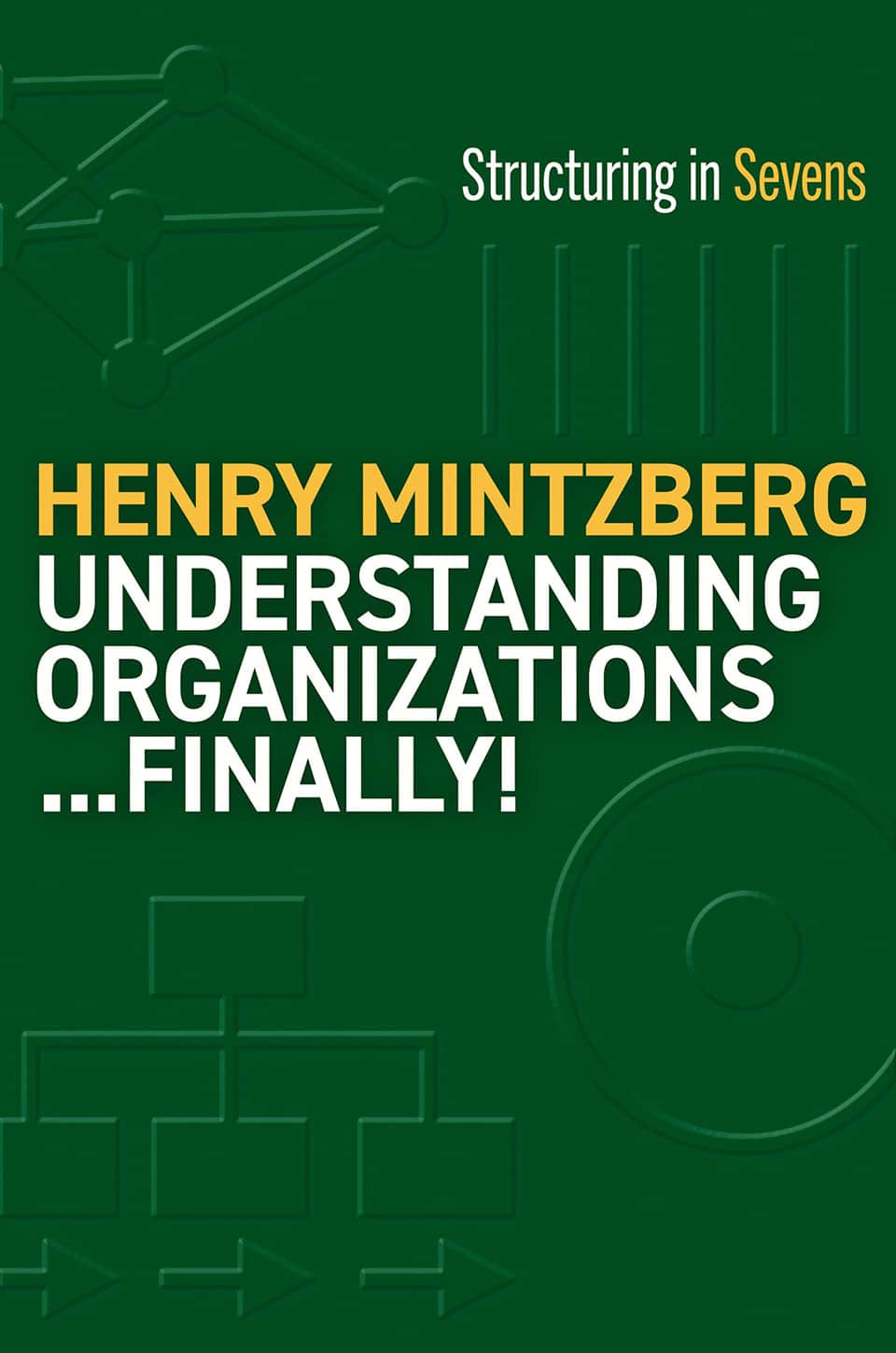Book Review: Understanding Organizations . . . Finally! Structuring in Sevens, by Henry Mintzberg

When it comes to studying organizations, Henry Mintzberg has been a go-to for some five decades. All in all, Mintzberg has penned some 20 books. If you’re in the field of strategic management or you occupy a space near or in the C-Suite, odds are you’ve got at least one of them on that walnut bookcase. Or just google “Mintzberg” and “management” — millions of hits come up.
But at his core, as Mintzberg explains in the introduction to his latest, Understanding Organizations . . . Finally! Structuring in Sevens, he’s more an organization theorist than a management theorist. Organizations fascinate him: “As soon as I enter one, I get a visceral sense of it—the culture, the condition, almost the smell of the place,” he explains.
This latest book is a beautifully thought-out revision of his benchmark study of organizations published in 1983, Structure in Fives — which, in itself, was a more accessible and consolidated version (“312 pages of larger type” as he notes) of his 1979 book, The Structuring of Organizations: A Synthesis of the Research (“512 pages in small type”). It doesn’t try to depart from his fundamental analysis of what he calls “strange beasts,” but it does track the ways they have evolved and iterated into new forms.
While charting the differences marking today’s organizations, he also notes some critical and universal truths. One unchanging essential: There’s no such thing as the single way to manage or structure an organization. You can’t run a factory like you run an orchestra; you can’t run a diner like you run a fast food franchise. Moreover, all those oversimplistic organization charts don’t say a whit about the particular forces at work inside a given organization.
What Mintzberg is able to do in this latest (231 pages of very readable type with lots of helpful charts) is reframe the way we see organizations now. He classifies them not to insist that there’s no variety — on the contrary, he sees endless variety — but to illustrate how the origins of an organization can shape how it’s structured, how it’s led, and at times, how it hamstrings itself. He notes how certain organizations are so pioneering — “project organizations” — that they function on “ubiquitous ambiguity” and can feel like an “adhocracy” unable to simply proceed from one point to the next. The examples he gives for each kind of organization are spot on — though perhaps not what one might expect.
At this stage in his career, Mintzberg certainly has nothing to prove. His ability to clarify and argue is so well-developed that he can throw a sense of play into the mix. Of the title, he notes that seven is a magic number, just as useful as any other number, then goes on to create seven essential forces at work on modern organizations that make so much sense they feel like a new gospel. He debunks common buzzwords that are too easy to take for granted, particularly in today’s content-saturated world. “Strategic planning is an oxymoron,” he declares, then deftly illustrates why. Beneath the humor remains a true love for the discipline of studying organizations, and getting beneath the surface not just to better understand them, but enable them to better function. This is a book that belongs on our shelves not because it’s yet another tome on management and organizations, but because it isn’t.
Have you read?
Business Cooperatives Giving Small Farmers a Voice by Jane Marsh.
A Guide To Selective Laser Sintering Technology.
The future of commercial real estate in North India by Abhishek Srivastava.
How Business Leaders Can Navigate Brand Reputation in the New World of #Deinfluencing by Eric Yaverbaum.
Unlock Your Recruiting Potential with an Email Finder Tool.
Add CEOWORLD magazine to your Google News feed.
Follow CEOWORLD magazine headlines on: Google News, LinkedIn, Twitter, and Facebook.
Copyright 2024 The CEOWORLD magazine. All rights reserved. This material (and any extract from it) must not be copied, redistributed or placed on any website, without CEOWORLD magazine' prior written consent. For media queries, please contact: info@ceoworld.biz









